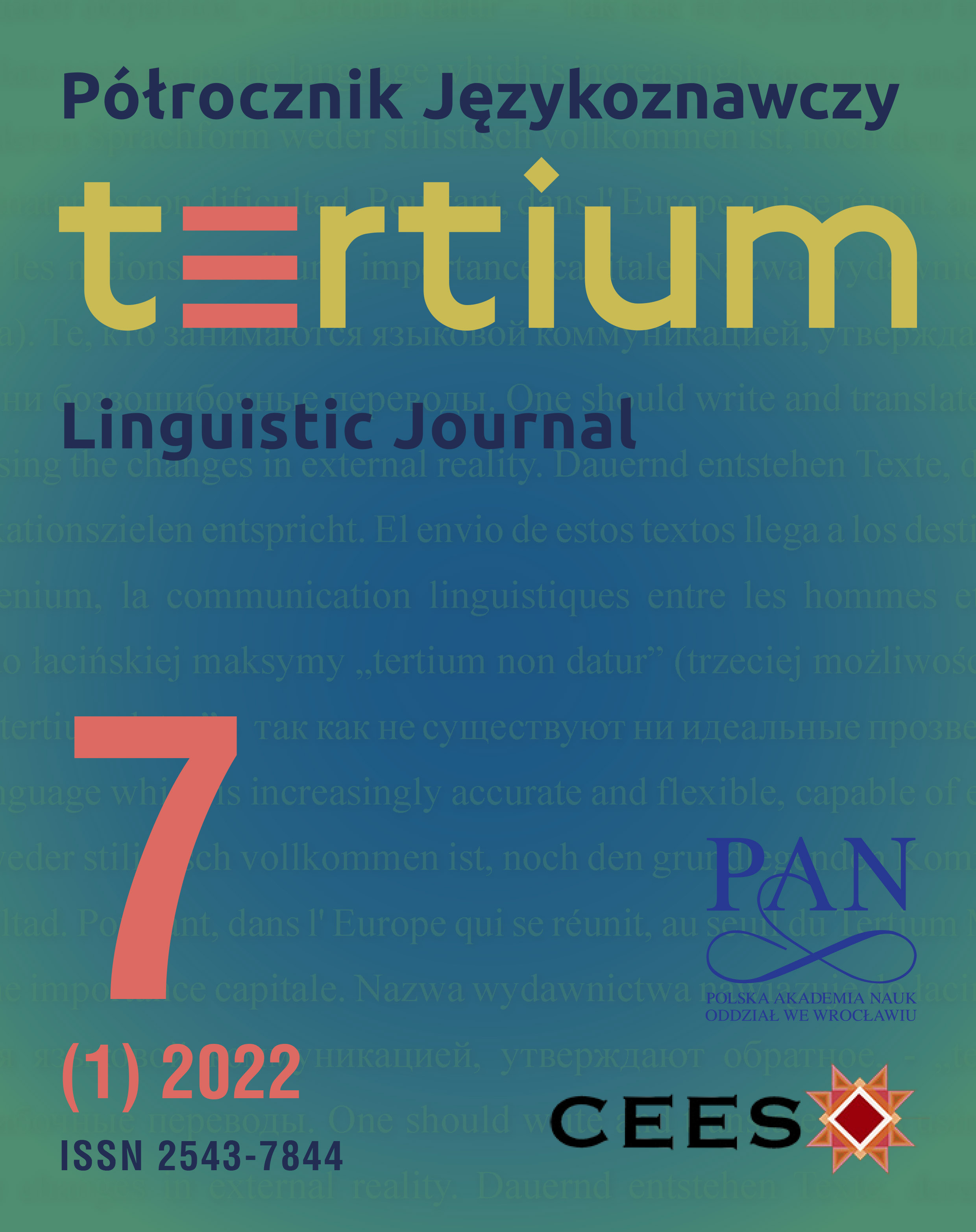Abstrakt
Powszechnie uważa się, że język polski nie posiada czasu Present Perfect, co stanowi wyzwanie dla osób uczących Polaków języka angielskiego. Z perspektywy dydaktycznej pojawia się pytanie, co postrzega polski uczący się języka angielskiego, gdy czyta/słyszy zdanie z Present Perfect. Przedstawione tu badania próbują odpowiedzieć na to pytanie, ale koncentrują się na uniwersalnym czasie Present Perfect. Opracowano kwestionariusz, aby zmierzyć percepcję dwóch cech definiujących angielski Universal Present Perfect: jego niekompletności i jego ciągłości. Ankietę wypełnili Polacy uczący się języka angielskiego oraz grupa brytyjskich native speakerów. Hipotezy były następujące: 1. Niekompletność/ciągłość jest postrzegana jako cecha uniwersalnego czasu Present Perfect, 2. uczący się o niższych umiejętnościach postrzegają niekompletność/ciągłość w mniejszym stopniu, a percepcja wzrasta wraz z biegłością, oraz 3. brytyjscy rodzimi użytkownicy języka mają najwyższy poziom percepcji. Wyniki pokazują, że niekompletność/ciągłość uniwersalnego czasu Present Perfect jest postrzegana. Chociaż percepcja spada u uczniów o niższych umiejętnościach, brytyjscy rodzimi użytkownicy języka nie wykazują najwyższego poziomu percepcji. Następnym krokiem będzie opracowanie metody, która skupia się na nauczaniu opartym na percepcji i przeprowadzenie eksperymentu analizującego jej skuteczność.
Bibliografia
Bardovi-Harlig, Kathleen (2000) “Tense and Aspect in Second Language Acquisition: Form, Meaning, and Use.” Language Learning 50; 1–437.
Bardovi-Harlig, Kathleen (2001) “Another Piece of the Puzzle: The Emergence of the Present Perfect.” Language Learning 51 (1); 215–64.
Comrie, Bernard (1976) Aspect: An Introduction to the Study of Verbal Aspect and Related Problems. Cambridge: Cambridge University Press.
Davydova, Julia (2011) The Present Perfect in Non-Native Englishes: A Corpus-Based Study of Variation. Berlin, Boston: De Gruyter Mouton.
Fisiak, Jacek, Maria Lipińska-Grzegorek, Tadeusz Zabrocki (1978) An Introductory English-Polish Contrastive Grammar. Warsaw: Państwowe Wydawnictwo Naukowe.
Iatridou, Sabine, Elena Anagnostopoulou, Roumyana Izvorski (2003) “Observations about the Form and Meaning of the Perfect.” [In:] Artemis Alexiadou, Monika Rathert, Arnim von Stechow (eds.) Perfect Explorations. Berlin: Mouton de Gruyter; 153–204.
Leech, Geoffrey (2004) Meaning and the English Verb. Harlow, England: Pearson Education Limited.
McCawley, James D (1971) “Tense and Time Reference in English.” [In:] Charles J. Fillmore, D. Terence Langendoen, Studies in Linguistic Semantics, New York: Holt, Rinehart and Winston; 96–113.
Migdalski, Krzysztof Marek (2006) The Syntax of Compound Tenses in Slavic. Tilburg, the Netherlands: LOT.
Pancheva, Roumyana (2003) “The Aspectual Makeup of Perfect Participles and the Interpretations of the Perfect.” [In:] Artemis Alexiadou, Monika Rathert, Arnim von Stechow (eds.) Perfect Explorations. Berlin: Mouton de Gruyter; 277–308.
Sadowska, Iwona (2012) Polish: A Comprehensive Grammar. Abingdon, England: Routledge.
Stevenson, Angus, ed (2010) Oxford Dictionary of English. Oxford: Oxford University Press.
Wróblewski, Janusz (1986) “The Present Perfect Tense and Its Polish Equivalents.” Acta Universitatis Lodziensis. Folia Linguistica, 14; 143–65.

Utwór dostępny jest na licencji Creative Commons Uznanie autorstwa – Użycie niekomercyjne – Bez utworów zależnych 4.0 Międzynarodowe.
Prawa autorskie (c) 2022 Półrocznik Językoznawczy Tertium

